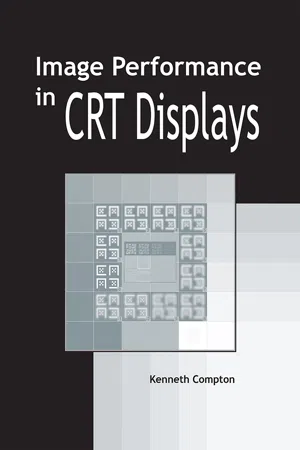About this book
This tutorial fully explains cathode ray tube (CRT) based displays in a single, easy-to-understand narrative. Detailed explanations and insights into performance properties and safety limits of the various glass melts follow a discussion of the fundamentals. In addition, other topics covered include the architectural differences between color and monochrome, the cathode (electron beam source) as a failure mode for all CRTs, types of cathodes available and their life expectancy. Phosphors, the metrics involved in defining a pixel and how distortions can influence the net results, defining CRT compliance with the DICOM Grayscale Standard Display Function (GSDF), test patterns and how they provide information about display performance, and video cards round out this informative work.
Frequently asked questions
- Essential is ideal for learners and professionals who enjoy exploring a wide range of subjects. Access the Essential Library with 800,000+ trusted titles and best-sellers across business, personal growth, and the humanities. Includes unlimited reading time and Standard Read Aloud voice.
- Complete: Perfect for advanced learners and researchers needing full, unrestricted access. Unlock 1.4M+ books across hundreds of subjects, including academic and specialized titles. The Complete Plan also includes advanced features like Premium Read Aloud and Research Assistant.
Please note we cannot support devices running on iOS 13 and Android 7 or earlier. Learn more about using the app.
Information
Table of contents
- Contents
- INTRODUCTION
- 1 CRT GLASS
- 2 CRT ARCHITECTURES
- 3 ELECTRON OPTICS
- 4 PHOSPHORS
- 5 GENERATING THE PIXEL
- 6 LUMINANCE UNIFORMITY
- 7 TEST PATTERNS AND HOW TO READ THEM
- 8 VIDEO CARDS AND IMAGE QUALITY
- 9 WINDOW AND LEVEL
- 10 OVERVIEW OF CRT RASTER DISPLAY
- 11 IMAGE QUALITY CONTROL AND MAINTAINING PERFORMANCE
- Appendix
- Index
- About the Author
